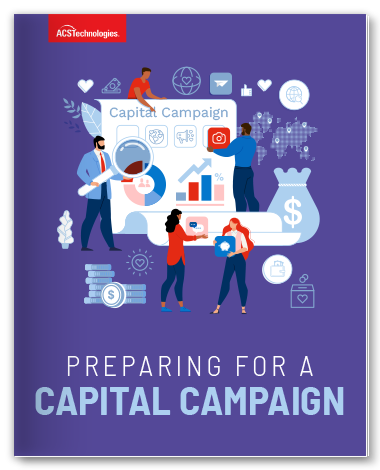Creating an Effective Capital Campaign – Part 1
At some point in the life of your church, you’ll likely need to implement a capital campaign. There are times we ask our members to step up and help us fund a major project – a building, a new ministry, a new piece of equipment, or retire debt.
In this blog series, we’ll walk through how churches can best plan and execute campaigns that will be successful. Today, we’ll start at the beginning, which is feasibility. In the fundraising and philanthropic world, feasibility is the capacity of your donor base to fund a project.
When we’re assessing the feasibility of a campaign, we’re weighing the needs and costs of the project against what donors are willing to give. And in the case of a church capital campaign, we’re asking donors to give above and beyond their annual tithes and pledges. Our communications to members must be clear that re-allocating their giving away from the church’s operating budget to a campaign is not the goal.
How do we begin exploring feasibility? Here are some key steps:
Project need and buy-in.
We first must assess if the project addresses a shared need in the church. Is this something the majority of members agree is a necessity or at least a great idea? Is this a pet project championed by a small group or an effort that has broad support? Will the project enhance your mission or create deeper staffing and budget need long-term than you can handle?
Your board and congregation listening sessions can help you align the project with the overall needs and mission of the church. This step ensures that the tail is not wagging the dog, and the project is truly an outgrowth of your church’s ministry needs.
Donor interviews.
Besides broad listening sessions, it’s critical that you seek out individual interviews with five to 10 of your key donors. A cross-section of your most generous givers will give you a temperature of how the congregation is reacting to the proposed project. In the course of your conversations, be sure to get their reaction and input to the financial plan and goal for the project. If you will be taking on debt in addition to raising cash over time, seek out how they feel about those options.
This also gives you an important opportunity to ask them where they see themselves in the donor pyramid and what level of gift they would consider. As we’ll unpack later in this series, these key donors will be those you will seek early commitments from to kick-start your fundraising.
Internal readiness assessment.
Take a realistic look at staff bandwidth and depth. As well as the readiness of the church board and key volunteers. Campaigns are all-encompassing and take a significant commitment of time and energy. This will overlay on top of your church’s day-to-day operations and ministries. Look for where you may need help or where your gaps will be.
Keep the goal within reach.
Sometimes the “big dream” project isn’t what we’re being called to. Be careful not to set a project and campaign goal that is beyond your capacity to raise. Not reaching a funding goal and having to whittle down a building or project plan is deflating for everyone. We want to stretch people’s vision and generosity but not beyond what is realistic to be successful.
It’s important to take your time, assess your feasibility and not rush into a campaign without a clear goal and plan. The feasibility phase itself may take weeks or months. The more work you can do upfront to hone in on the capacity of your givers – and their passion for this project – will keep you moving toward a successful campaign launch.
In the next blog of this series, we’ll guide you through some key steps to preparing your church to enter into a campaign phase.
PREPARING FOR A CAPITAL CAMPAIGN
Capital campaigns fail. Avoid the common mistakes and ensure your church’s campaign success by preparing adequately.
This article provides the phases and tools you’ll need to fully prepare your church staff, key volunteers, and donors for all that a campaign will entail. Discover the key steps you’ll need to undertake to be certain your church is well-positioned to launch a campaign that will meet its goal.
Tim Smith has over 30 years of experience in Church, Non-Profit Administration, Management, and Fund Development. Serving as an Executive Pastor and Chief Development Officer in growing Churches and Non-Profit Organizations has provided a wide range of expertise and resources. Tim serves as Founder and CEO for Non-Profit DNA, a boutique firm committed to helping nonprofits and churches build their capacity through fundraising, leadership, team building, staff recruiting, and coaching.





